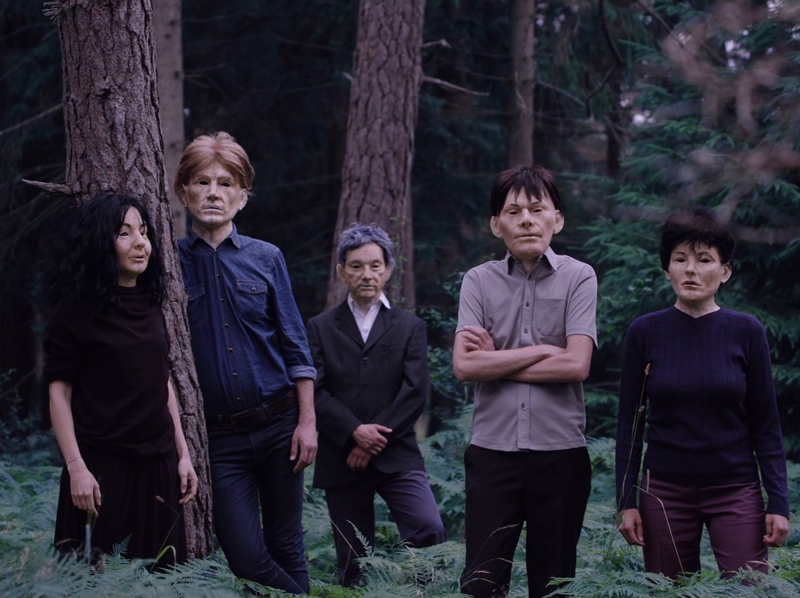What might seven avant-garde conceptual twentieth-century artists, each associated with disappearing from the artworld (through choice or circumstance) do in the afterlife, where it’s not just ‘art’ that they have been disconnected from, but ‘life’? One answer to this is Future Days (2013), one of five new and recent short films by Polish artist Agnieszka Polska. In the future of Future Days the Swedish island of Gotland stands in for the underworld, where the protagonists (Paul Thek, Jerzy LudwinÅL ski, Włodzimierz Borowski, Lee Lozano, Charlotte Posenenske and Andrzej Szewczyk, each portrayed by an actor in a semilifelike latex mask) amble about the more remote parts of the island, encountering similarly ‘departed’ artworks – Robert Smithson’s Partially Buried Woodshed (1970), Richard Long’s A Line Made by Walking (1967) – while musing on their situation. The dialogue is a bit clunky, the artists are kind of zombies after all, but their predicament throws up pertinent questions touched on in all these films: what does creative absence mean and how do we, the living, construct and perpetuate mythologies about people and events from the past?
Paweł Freisler, another ‘disappeared’ artist, is at the centre of The Garden (Gardener’s Responsibility) (2010), having supposedly withdrawn from the artworld in the 1970s to take up gardening. Using a mix of filmed and archive horticultural footage, Polska reimagines Freisler as the film’s unseen narrator, explaining the ecosystem of his garden. A reimagined event is also the focus of How the Work Is Done (2011), a 1956 student occupation at Kraków’s Academy of Fine Arts. This creative absence is the students’ labour, alluded to by simple animations of chopping, sawing and chiselling, the use of animation a nod to Poland’s art-historical associations with the medium.
This interest in pseudo-documentary, constructed memory and material properties historically aligns Polska with the work of Chris Marker, and contemporarily Duncan Campbell and to a lesser extent Elizabeth Price and Jane and Louise Wilson, without perhaps quite the sophistication. But when Polska shifts the focus more towards ambiguities of understanding in visual imagery, verbal language and science, she comes into her own. The pair of disembodied red lips that repeats soothing refrains in I Am the Mouth II (2014) refers to the brain-soothing effects of banal words and actions caused by the odd Internet phenomenon of ASMR (Auto Sensory Meridian Response) videos. In Watery Rhymes (2014), commissioned for this show, Polska creates, in effect, a science-based pop promo, layering written text, music, animation and archive images that respond to the inability of quantum physics to be expressed in ordinary language. Viewed together, what Polska’s films seem to be saying is that the past is as in flux as the present, that conceptual art is as much about storytelling and language as it is about ideas, and that the most legitimate activity for an artist may be to stop making art.
This article was first published in the March 2015 issue.
